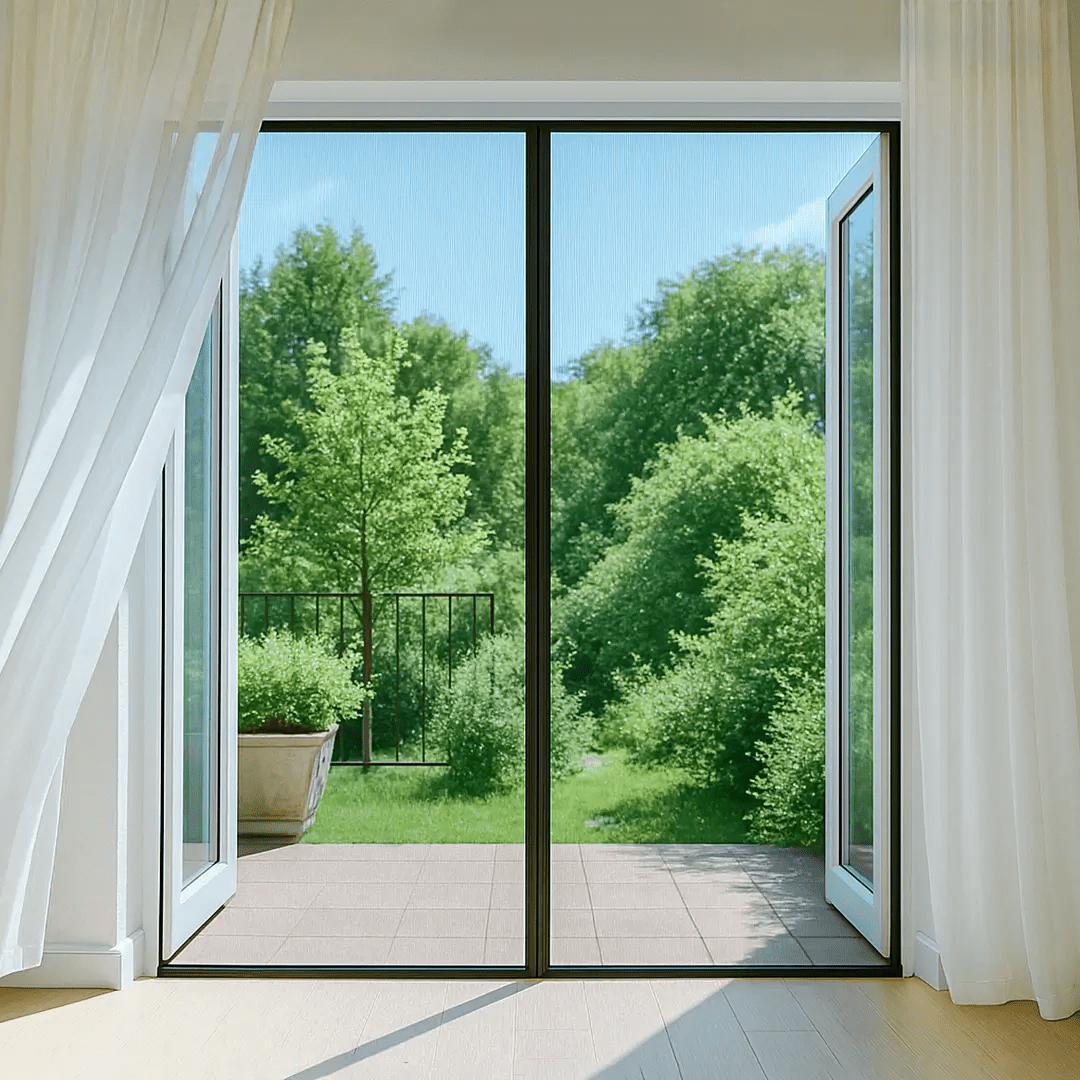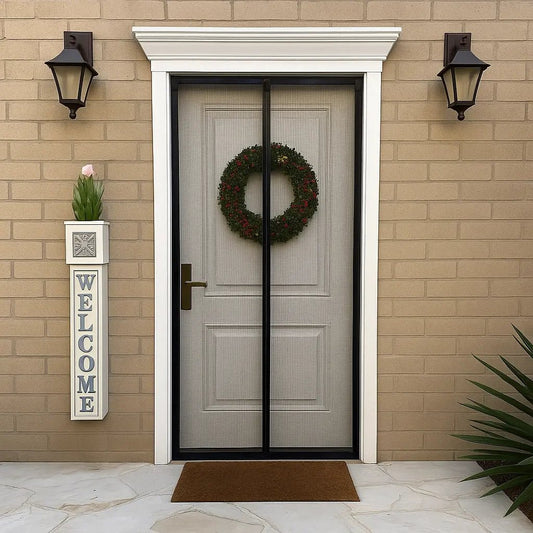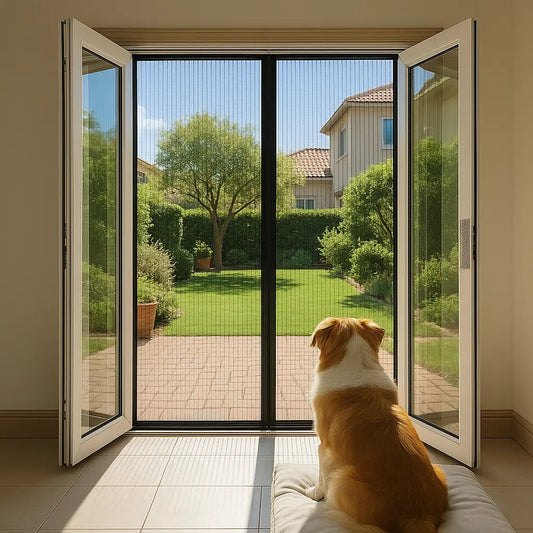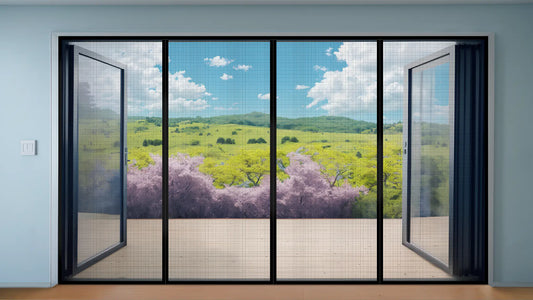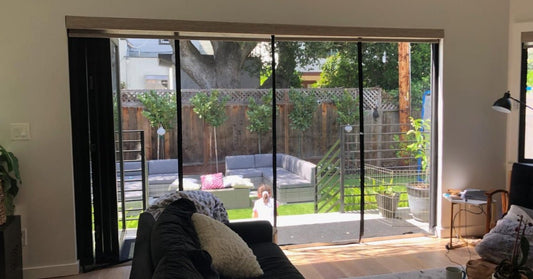Unlocking Your Trailer's Potential: The Ultimate Guide to a Cargo Trailer Screen Door
Y.Walter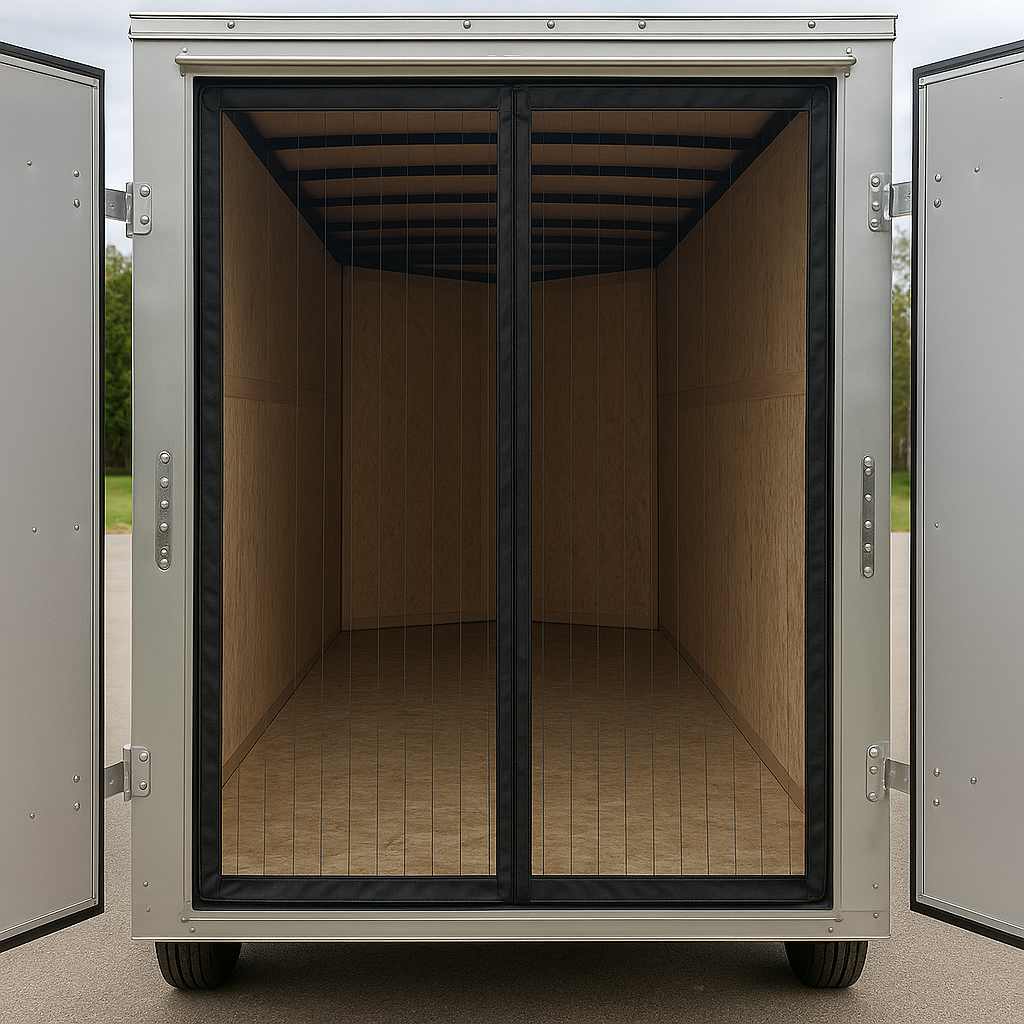
Cargo trailers are the unsung heroes of the road—blank canvases ready to be transformed. No longer just for hauling equipment, these versatile shells are being ingeniously converted into toy haulers, mobile workshops, pop-up shops, and of course, minimalist campers. But in every one of these transformations, there's a critical moment when you realize you need to bridge the gap between the great outdoors and your enclosed space. You need fresh air and light, but you absolutely do not want the bugs. This is the moment you start searching for a cargo trailer screen door.
The challenge, however, is that adding a screen door for enclosed trailer use is not as simple as buying one from a hardware store. The openings are non-standard, the walls are metal, and any solution has to be durable enough to handle life on the move. But don't worry, it's a problem with a fantastic solution. This guide will explore the different approaches to screening your trailer, from complex DIY builds to the simplest, most effective modern alternative. We'll show you how to transform your hot, stuffy box into a breezy, comfortable, and bug-free haven.
Why a Screen Door is a Non-Negotiable Upgrade for Your Trailer
Before we dive into the "how," let's solidify the "why." Adding a screen door to your cargo trailer is arguably one of the most impactful upgrades you can make.
- Ventilation and Temperature Control: An enclosed metal box becomes an oven in the sun. A screen door allows for critical cross-ventilation, dramatically lowering the interior temperature and making the space usable and comfortable.
- Insect Protection: This is the most obvious benefit. Enjoy the evening air at your campsite or work with the doors open without being attacked by mosquitoes, flies, and other pests.
- Creates a Livable Indoor-Outdoor Space: For camper conversions or toy haulers, a screen on the rear ramp door turns your loading ramp into a functional patio, effectively doubling your living space while maintaining an insect-free interior.
- Improved Work Environment: For mobile workshops or vendor trailers, a screen door allows for natural light and airflow, creating a safer and more pleasant environment to work in for extended periods.
- Keeps Debris Out: A screen helps keep blowing leaves, dust, and other debris out of your clean interior space.
The Unique Challenges of Screening a Cargo Trailer
You can't just install a standard residential screen door on a trailer. The project comes with a unique set of challenges:
- Non-Standard Openings: Trailer side doors are often narrower and shorter than house doors. The rear ramp door opening is massive and has no standard size.
- Metal Frames: The walls and door frames are typically steel or aluminum. This makes drilling and screwing in traditional door frames difficult and can risk creating points for rust to form.
- Durability for Travel: Any solution must be able to withstand the vibrations and flexing that happen on the road. Rigid, poorly installed doors can easily be damaged.
- Sealing on Uneven Surfaces: The ramp door, in particular, may not offer a perfectly square or flush surface for mounting a traditional door.
Option 1: The Full DIY Custom-Framed Screen Door
For the skilled craftsperson, one popular route is to build a complete, custom-framed cargo trailer screen door from scratch.
- How It's Done: This typically involves building a wooden or aluminum frame sized perfectly to your side door or rear ramp opening. For a large rear opening, this often means creating two "barn style" screen doors that meet in the middle. The builder then stretches and splines screen mesh into this custom frame and figures out a way to hinge and latch it to the trailer's frame.
-
Pros:
- Can be made to be very sturdy and secure if built well.
- A satisfying project if you have the skills.
-
Cons:
- Extremely Difficult and Time-Consuming: This is a major construction project that requires significant woodworking or metalworking skills, tools, and time.
- Heavy: A large wooden frame for a ramp door can be very heavy, adding significant weight to your trailer.
- Prone to Damage: A rigid frame can be subject to racking and damage from the trailer flexing during travel if not engineered perfectly.
- Complex Installation: Attaching hinges and latching mechanisms to the metal trailer frame is a serious challenge.
This approach offers a great result for those with the expertise, but it's out of reach for the average DIYer.
SORA_PROMPT: A wide shot of the rear of a cargo trailer that has been converted into a cool, rustic camper. The large ramp door is down, creating a patio. The entire rear opening is covered by a perfectly fitted Coverwith magnetic screen door. A person is sitting inside on a bench, enjoying the view of a beautiful forest campsite through the screen, with a mug in hand. The scene feels open, airy, bug-free, and highlights a perfect DIY conversion.
Option 2: High-End Roll-Up or Retractable Screens
Another option for the rear ramp door is an industrial-style roll-up or retractable screen, similar to what you might see on a commercial garage.
- How It's Done: A large cassette is mounted above the ramp door opening, and the screen rolls up into it, guided by side tracks. These are almost always motorized.
-
Pros:
- Disappears completely when not in use, offering a very clean look.
-
Cons:
- Extremely Expensive: This is by far the most costly option, often running into thousands of dollars.
- Very Complex Installation: This is not a DIY project and requires professional installation.
- Adds Weight and Complexity: The cassette and motor add significant weight and mechanical/electrical systems to your trailer that could potentially fail.
- Track Maintenance: The tracks can collect dirt and require maintenance.
This is a premium, high-tech solution, but its cost and complexity put it out of reach for most trailer conversion projects.
Option 3: The Ultimate Solution for Simplicity, Fit, and Value
After looking at the complex and expensive options, let's explore what is arguably the best cargo trailer screen door solution available today: the custom-fit magnetic screen door. This modern approach, perfected by companies like Coverwith, directly solves all the unique challenges of screening an enclosed trailer.
Why a Custom Magnetic Screen is Perfect for Your Trailer
This isn't just an option; it's a game-changer for trailer owners. Here's why:
- Perfect Custom Fit for ANY Opening: This is the most important benefit. It doesn't matter if your side door is a weird size or if your rear ramp opening is massive. You simply measure your opening, and a custom magnetic screen is made to those exact dimensions for a perfect, gap-free seal. It's the ultimate screen door for enclosed trailer openings of any size.
- Easy, No-Drill, Damage-Free Installation: How do you attach a screen to a metal trailer frame without drilling? With a Coverwith screen, you use a strong, durable adhesive hook-and-loop fastener system. You clean the metal frame, apply the adhesive strips, and press the screen on. It's a simple, tool-free process that takes minutes, not days. It doesn't create holes, won't cause rust, and is completely removable if you ever change your setup.
- Durability and Travel-Readiness: With no rigid parts, there's nothing to break or bend from road vibrations. The flexible mesh and reinforced border can handle the rigors of travel. For extra security on long trips, you can even quickly detach it from the adhesive strips, roll it up, and store it.
- Unmatched Convenience: The hands-free magnetic closure is perfect for trailer life. Carrying gear in and out of your toy hauler? Pushing a dirt bike up the ramp? Carrying tools for your mobile workshop? You just walk through, and the screen closes behind you.
- Incredibly Cost-Effective: Compared to the cost, materials, and time of a full DIY custom build or the massive expense of a motorized roll-up screen, a custom magnetic screen is an extremely affordable and high-value upgrade.
How to Measure Your Trailer for a Custom Screen
Measuring is simple. For a side door or a rear ramp opening, you'll want to measure the flat surface of the frame around the opening where the adhesive strips will attach.
- Measure the Width: Get the full width of the opening you want to cover, from the left edge of the frame to the right edge.
- Measure the Height: Get the full height, from the top edge of the frame down to the floor or ramp surface.
Provide these two simple measurements, and a perfectly sized screen will be created for you.
Comparing the Cargo Trailer Screen Door Solutions
| Feature | DIY Custom-Framed Door | Industrial Roll-Up Screen | Coverwith Custom Magnetic Screen |
|---|---|---|---|
| Cost | Moderate to High (materials + time) | Very High | Low to Moderate |
| Installation | Very Difficult, Pro-level skills | Professional Installation Required | Very Easy, DIY in minutes, No Tools |
| Fit | Custom, but depends on skill | Custom, but requires structure | Perfectly Custom to Your Measurements |
| Hands-Free Use | No | Yes (if motorized) | Yes, Standard |
| Durability | Good if built well, but rigid | Good, but has moving parts | Excellent, no rigid parts to break on the road |
| Removable | No | No | Yes, easily removable |
Conclusion: The Easiest Way to Upgrade Your Enclosed Trailer
Your cargo trailer is a space of incredible potential, but unlocking that potential requires smart, practical solutions. When it comes to adding a cargo trailer screen door, you don't have to be a master carpenter or spend a fortune to get a professional, highly functional result. While building a custom framed door is an admirable project, the complexity and time commitment are immense.
The modern, custom-fit magnetic screen door has emerged as the definitive screen door for enclosed trailer applications. It's a solution that directly meets every challenge head-on, offering a perfect fit for any size opening, an incredibly simple and damage-free installation process, and a level of convenience that traditional options can't touch. It's the fastest, smartest, and most cost-effective way to transform your trailer into the comfortable, bug-free, and versatile space you've always imagined.
Ready to Tackle Other DIY Door Projects?
You've just learned about the best way to add a screen to a unique opening like a cargo trailer. If you're inspired to take on other projects and want to learn about attaching a screen door to your home, workshop, or other buildings, our comprehensive pillar page is filled with expert tips and installation guides for all types of doors.
[Master Your Screen Door Installation Skills]
Frequently Asked Questions About Cargo Trailer Screen Doors
Can I use a standard RV screen door for my cargo trailer's side door?
It's unlikely to be a direct fit. Cargo trailer side doors often have different dimensions and frame depths than standard RV doors. You would likely need to build a custom jamb or frame to make it work, which is a complex modification.
What is the best way to screen the giant rear ramp door of my trailer?
For the large rear opening, a custom-fit magnetic screen door is the most popular and practical solution. It can be made to the exact large dimensions of the opening, is easy to install on the metal frame, allows you to walk through any part of it, and is highly affordable compared to industrial roll-up screens.
How does a magnetic screen door hold up to wind on a trailer?
Quality magnetic screens use strong, full-length magnets and a full-perimeter adhesive attachment. For normal breezy conditions, this is very effective. In very high winds, like any non-solid door, it may blow open. However, its flexibility means it won't be bent or damaged like a rigid door might be.
Will the adhesive used for a magnetic screen door damage the paint on my trailer?
High-quality adhesive fasteners, like those used by Coverwith, are designed to be strong yet removable from standard, cured paint surfaces. When it's time to remove, you can typically warm the adhesive with a hairdryer and peel it off slowly without damaging the paint.
Is a magnetic screen door for enclosed trailer a good option if I use it as a toy hauler?
It's an excellent option. The hands-free opening is perfect for when you're maneuvering gear in and out. It's also durable enough to handle the environment, and if you need the entire opening completely clear, the screen can be detached from its hook-and-loop fasteners in seconds.
